Back to top: Metals from Unit A16
Overview
A large number of metal artifacts were found in A16, primarily belonging to funerary sets of the several burials recovered. So the objects are typical of funerary set: pin, earring, bracelet, metal vessels. Other objects were instead found in secondary deposition, mainly in the large brickfall a4. Here not all the objects are listed, but just those indicative for each typology.
Back to top: Metals from Unit A16
Metal objects in funerary set
Metal objects are typical of funerary set, i.e. jewelry items for females and weapons for males, either from pot burials and excavated burials, and either for female, male or child burials.
Back to top: Metals from Unit A16
Earring
The most common object found is the earring found only(?) associated to female skeleton. It could be made of silver (i33, i36,) or made of bronze/copper-alloy (i124, i125, i134). i74 is a group of 9 bronze rings belonging to earrings or more probably to some other object like a necklace. The earrings are usually circular in shape, smaller or larger in diameter.
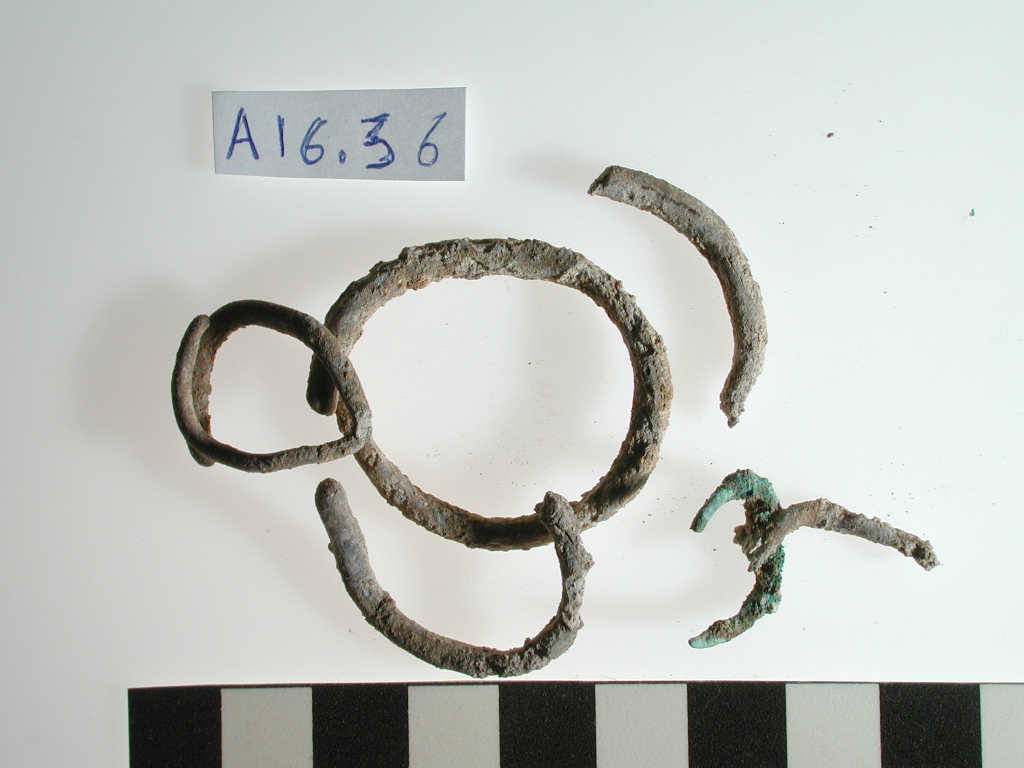 i36 |
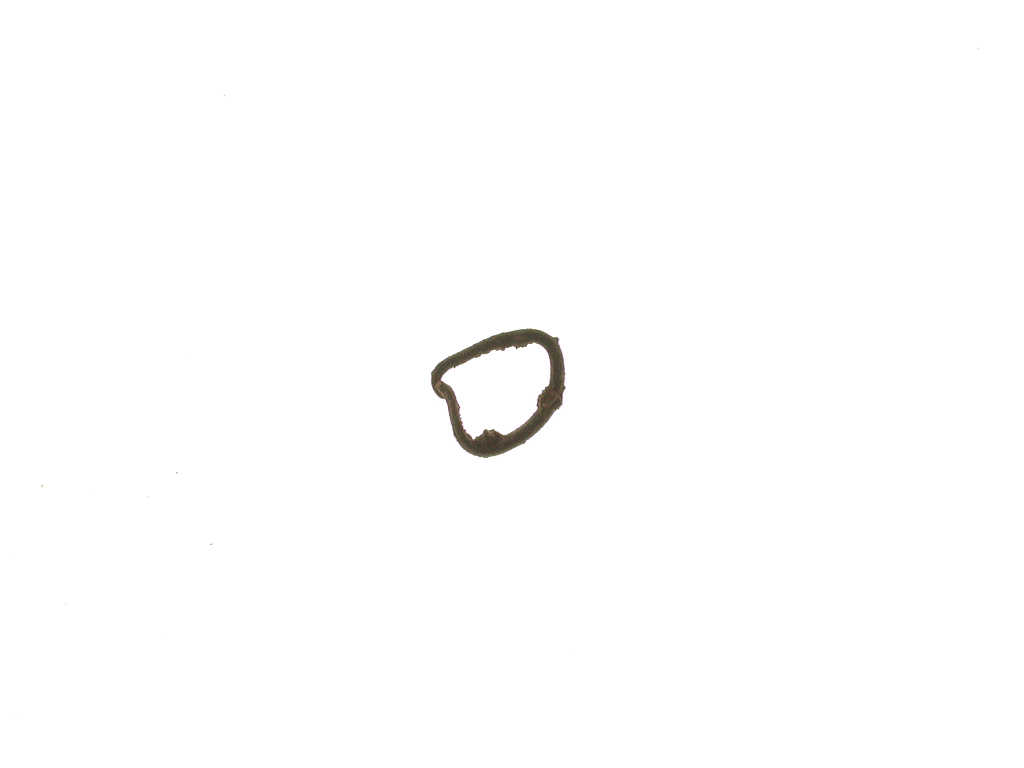 i134 |
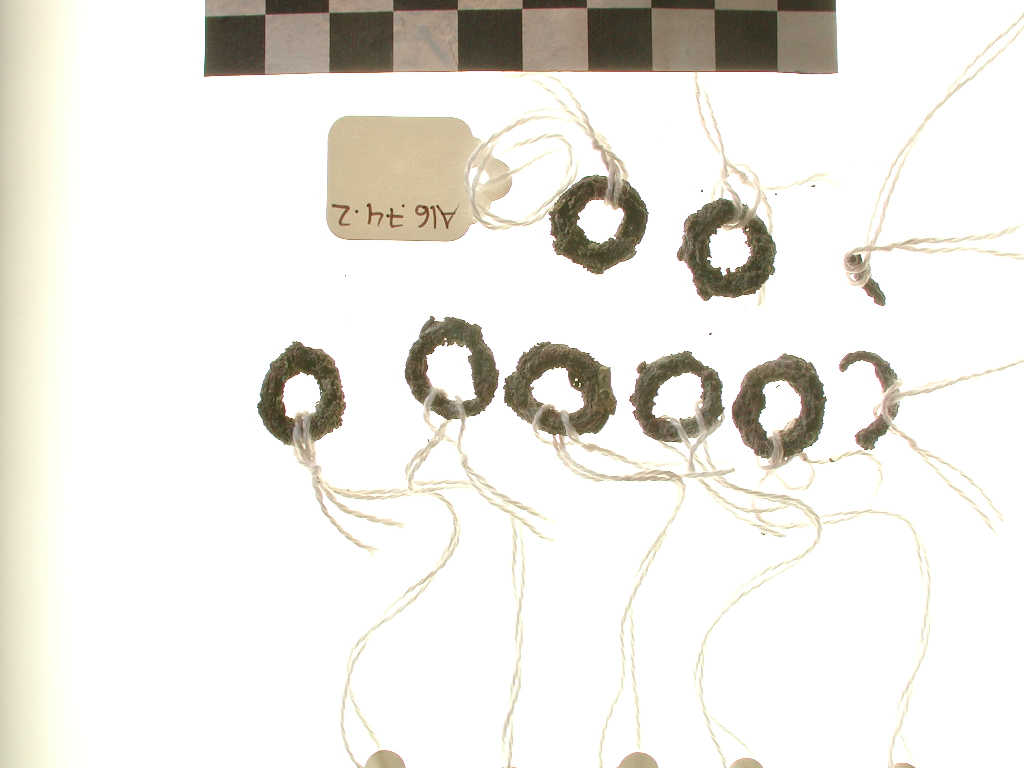 i74 |
Back to top: Metals from Unit A16
Bracelet
Two bronze bracelets (i72 and i73) were found in a single pot burial of a 2-3 years old child. They were very oxidized and they have a small opening. The diameter is about 4.5 cms.
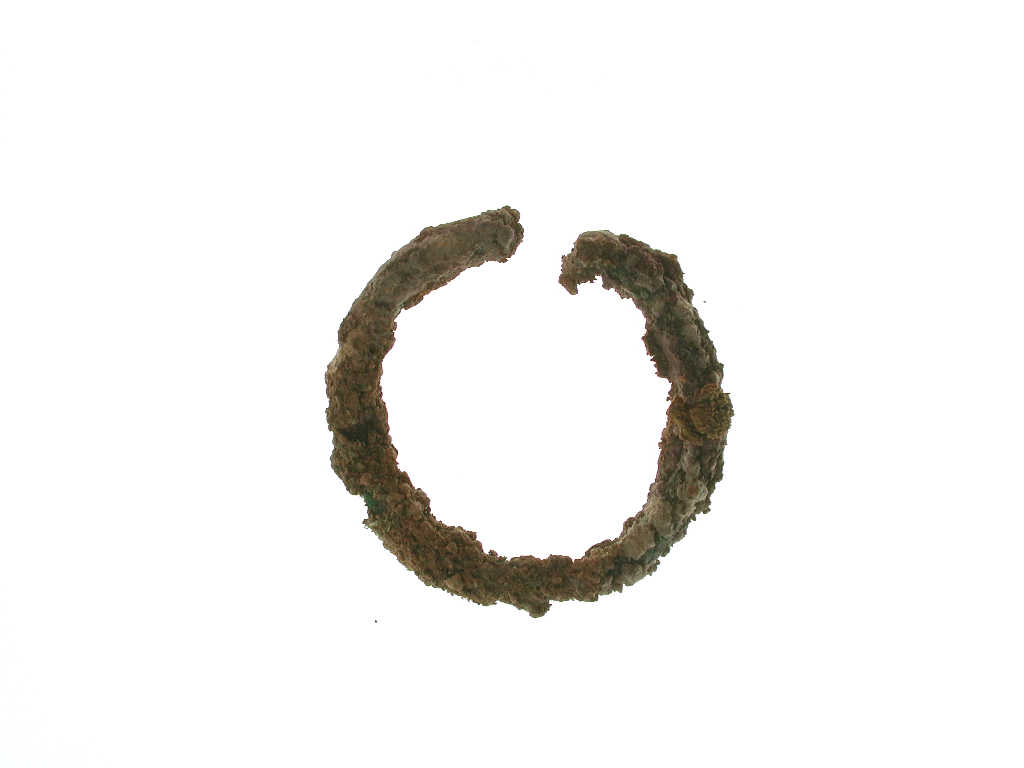 i72 |
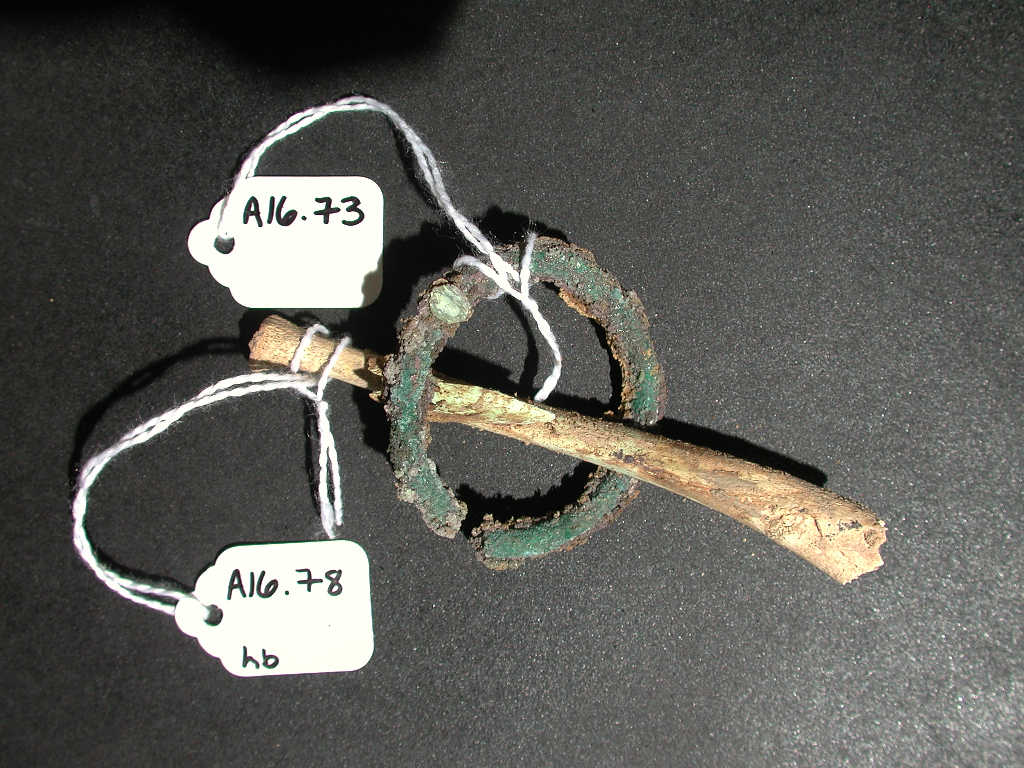 i73 |
Back to top: Metals from Unit A16
Pin
Bronze pins with small differences were found inside funerary sets. Two examples (i76, i158) have no head preserved and are circular in section. Two other examples (i101, i159) have a globular head and an irregularity not far from it.
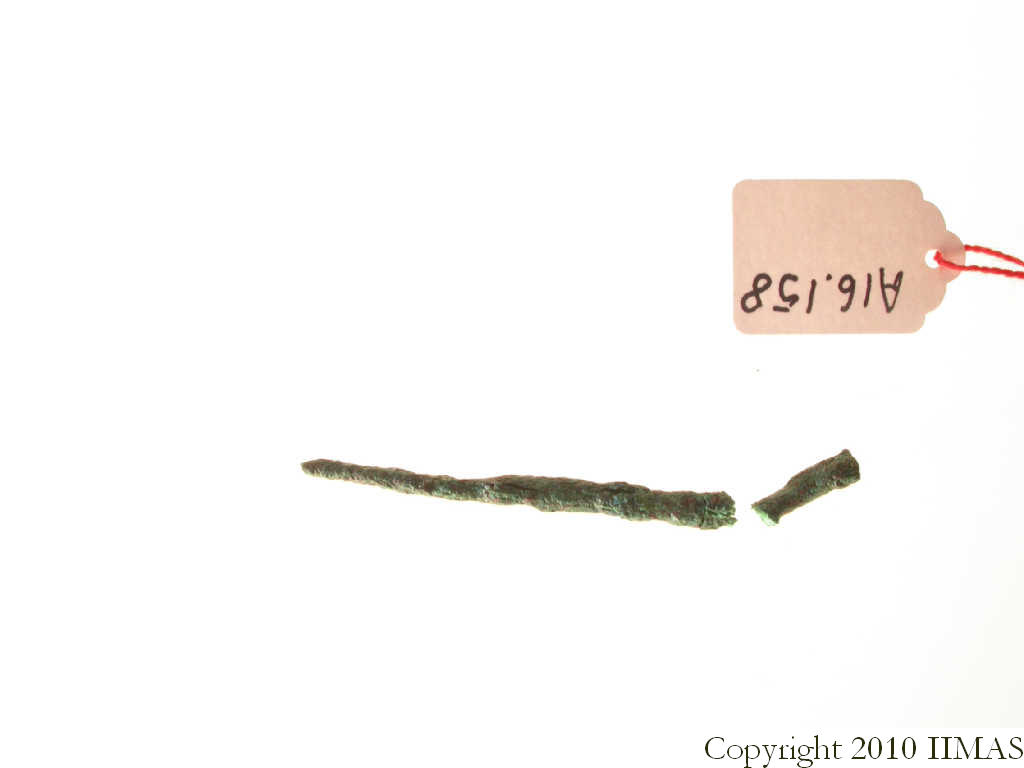 i158 |
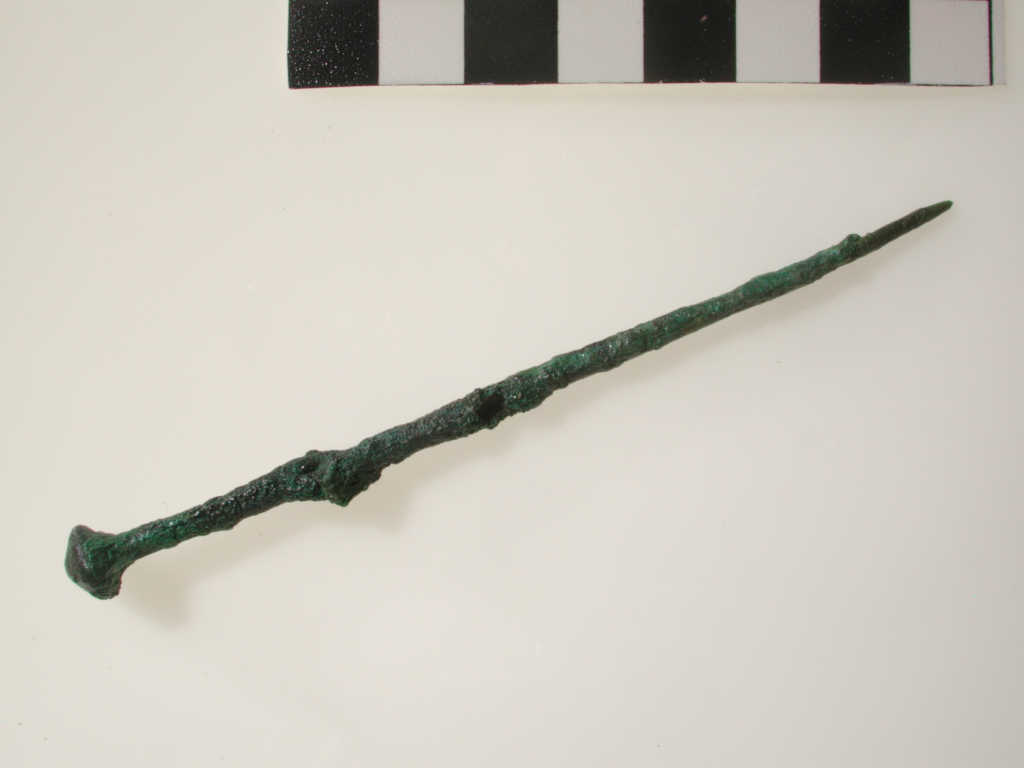 i101 |
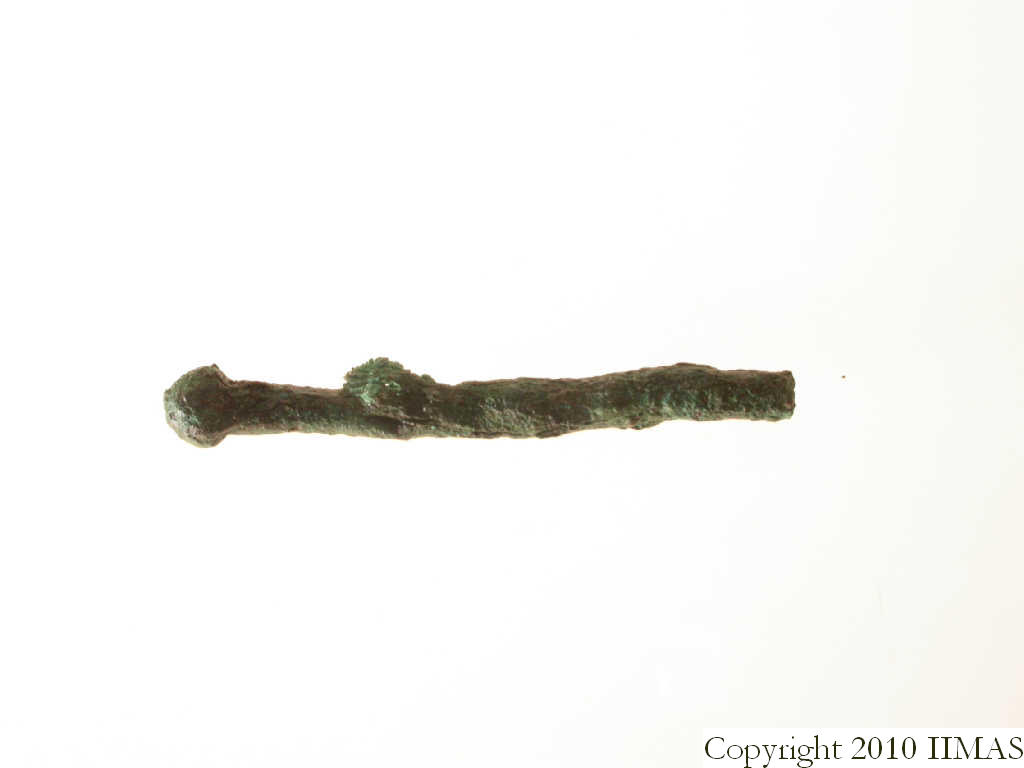 i159 |
Back to top: Metals from Unit A16
Various objects
The funerary sets also include other important objects. A bronze bucket (i29) in very fragile conditions, a silver disk shape with a circular hole in the center possibly a pendant (i64), a nail (but it could also be a pin) (i57) a very beautiful bronze spearhead or knife blade with a shank for the shaft (i56). Inside a burial also a metal (silver?) bead (i66) was found, with a hole passing through and lemon like shape.
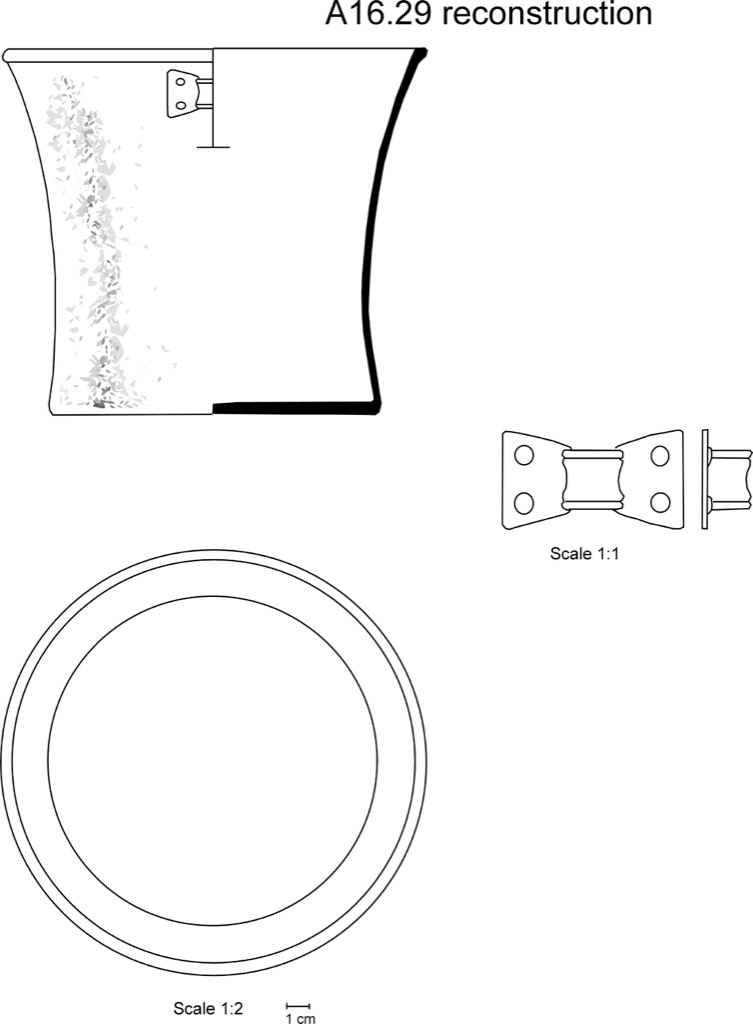 i29 |
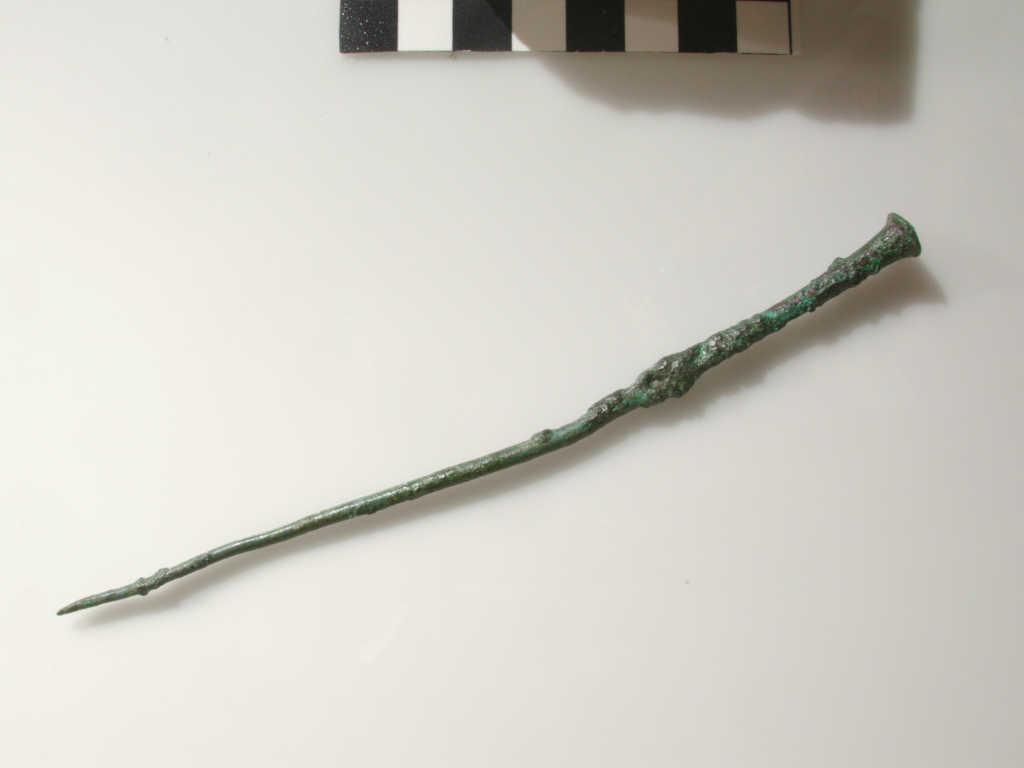 i57 |
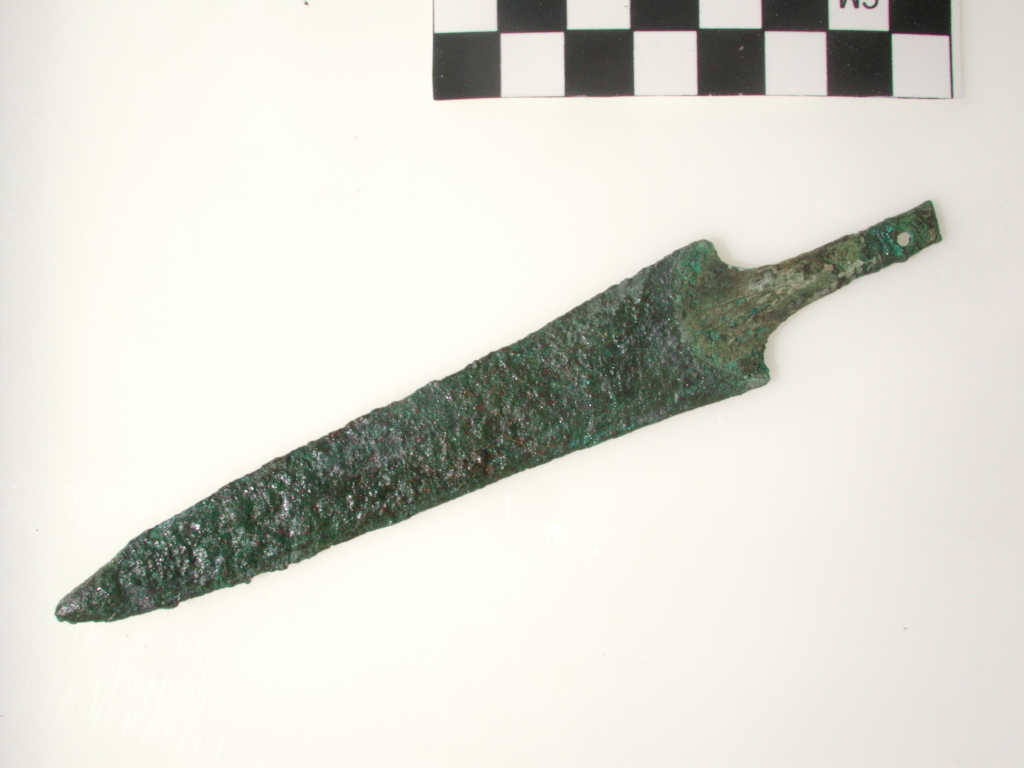 i56 |
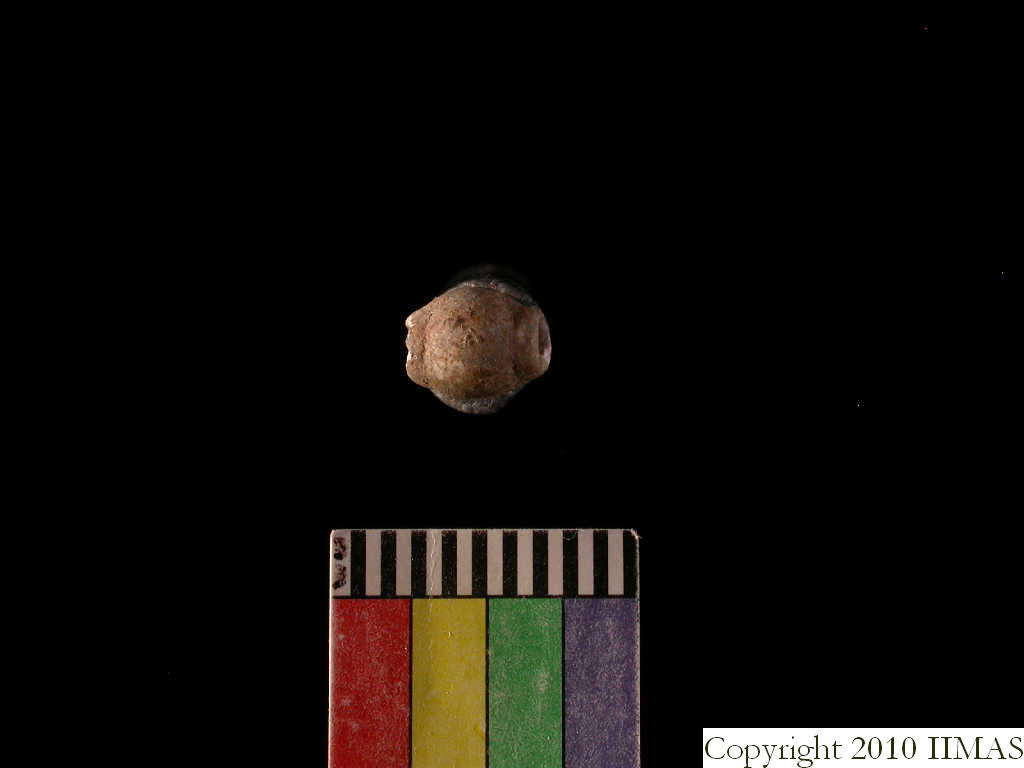 i66 |
Back to top: Metals from Unit A16
Metal objects in secondary deposition
This group includes several typologies of objects, some of which also found and typical of burial funerary sets. Bronze earrings (i103, q145.1, q348.2, q471.2), bronze needle (q29.1, i173), fragments of bronze items, possibly some kind of tool (q525.1, q683.5), bronze rounded and pointed pins (i107, i133, q603.1, q783.2) or pins with oblong and large head hole (i93). A very beautiful example (i3) is squared in section and shows a very elaborated head.
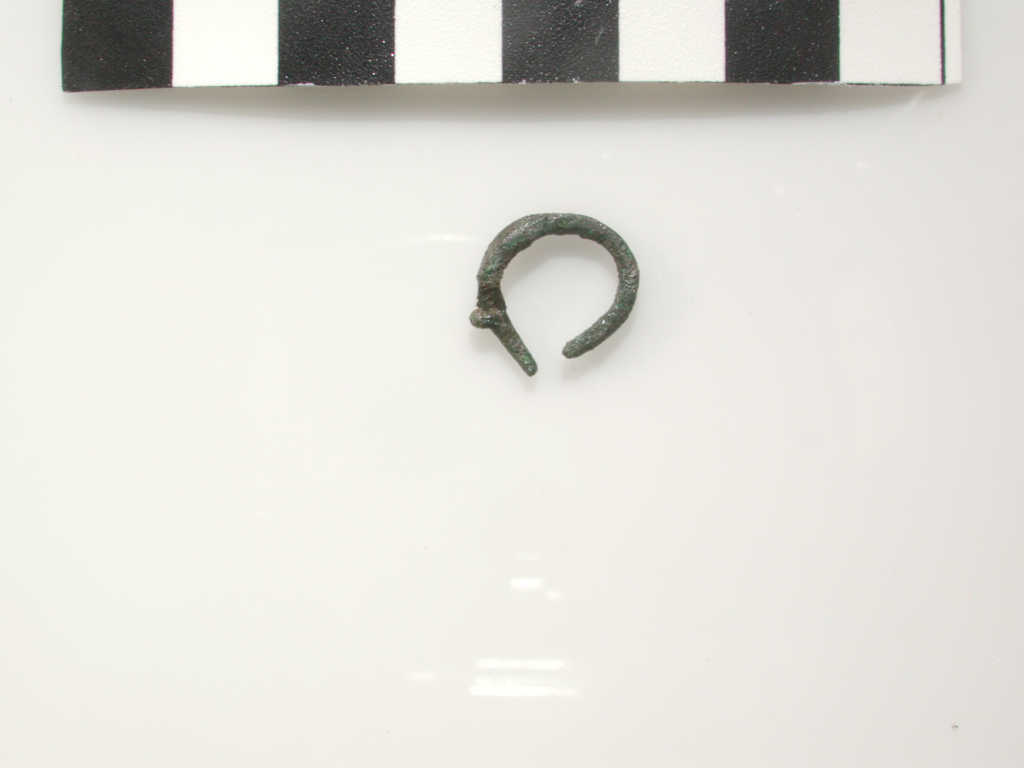 i103 |
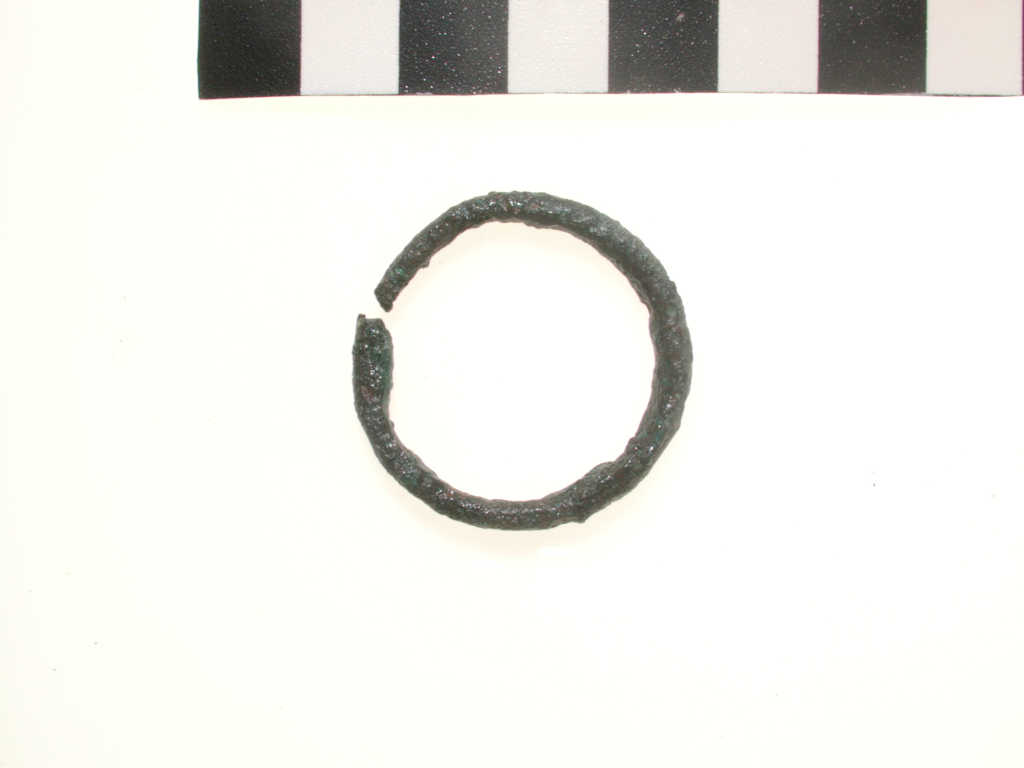 q348.2 |
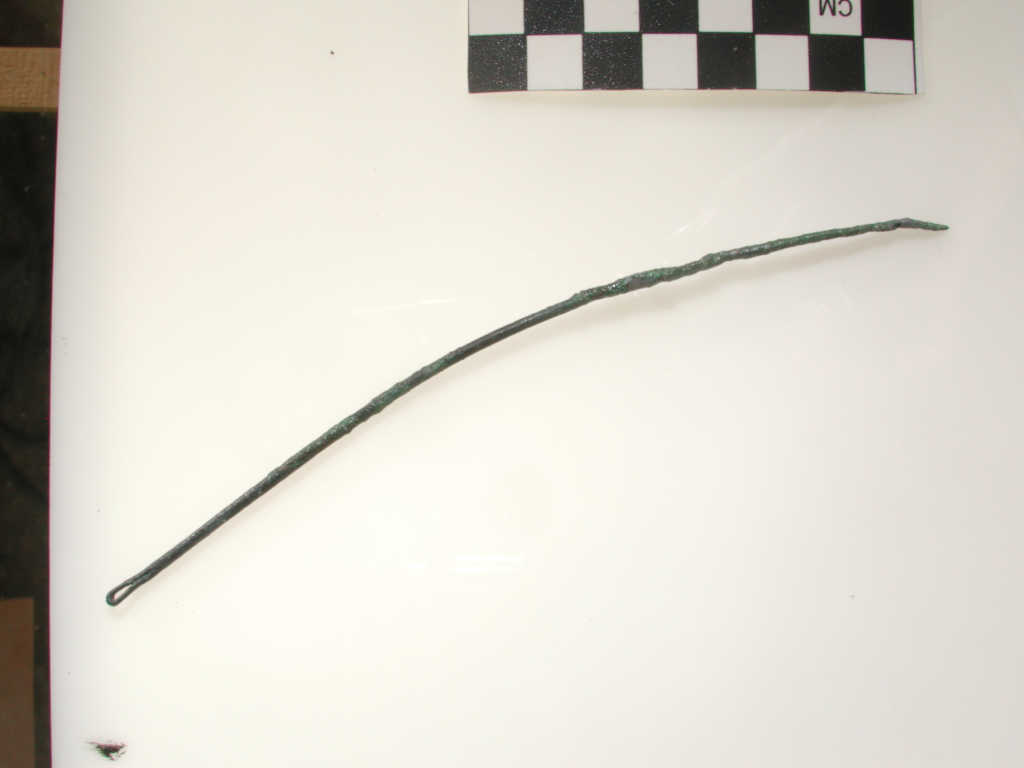 i173 |
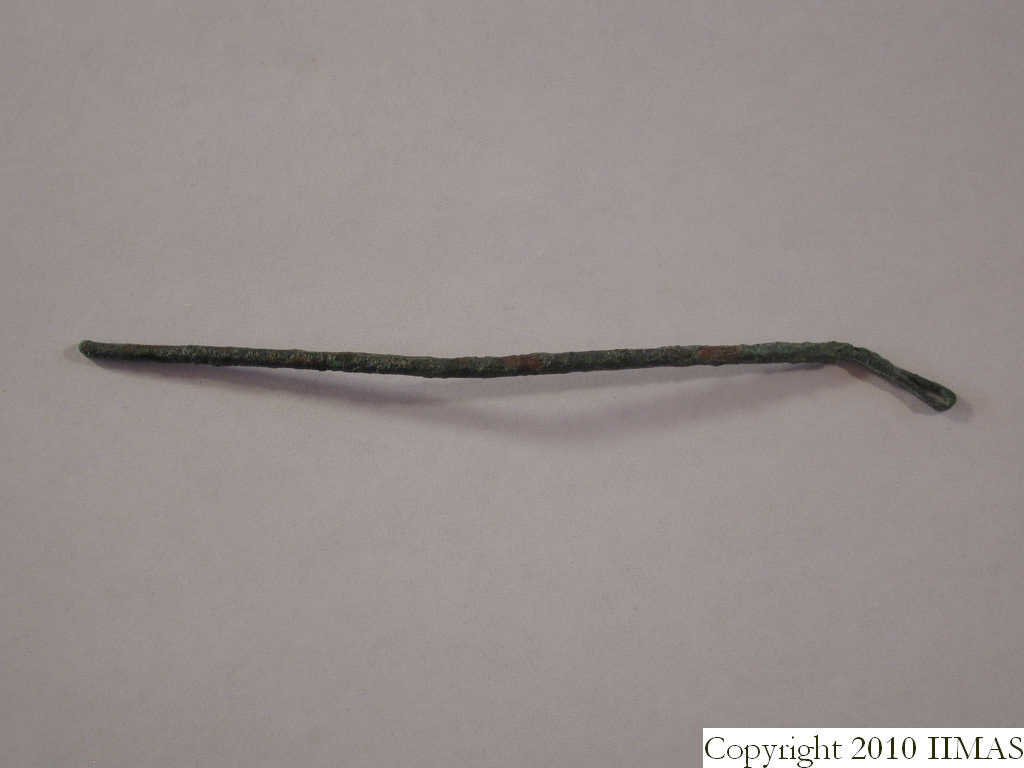 q783.2 |
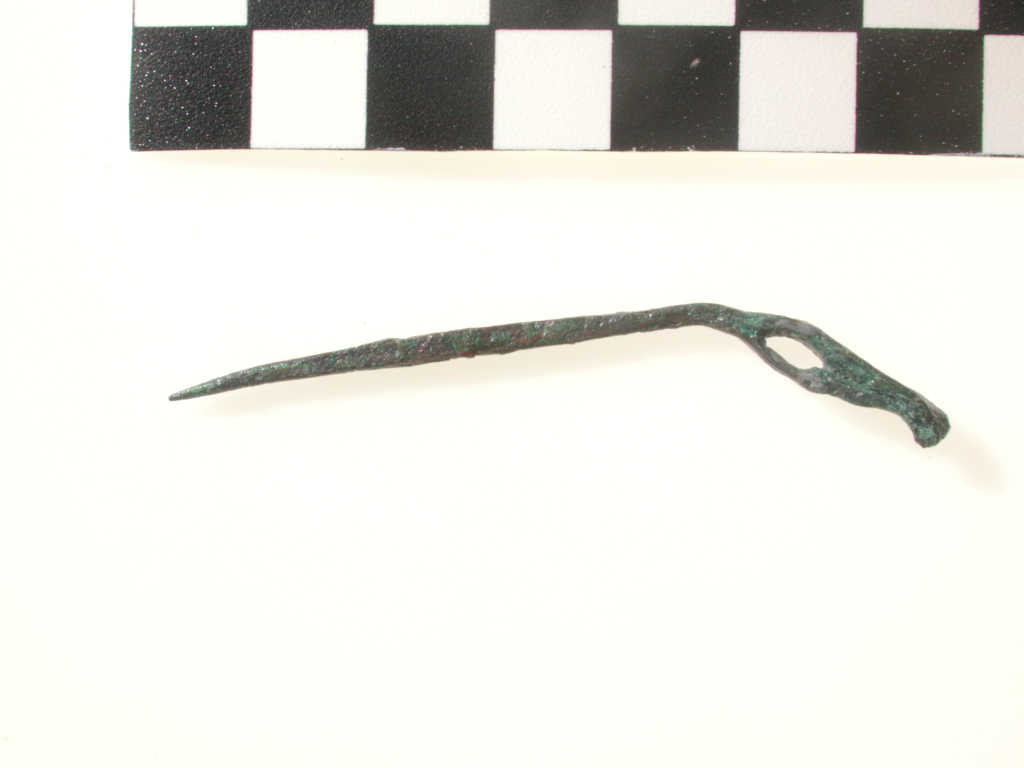 i93 |
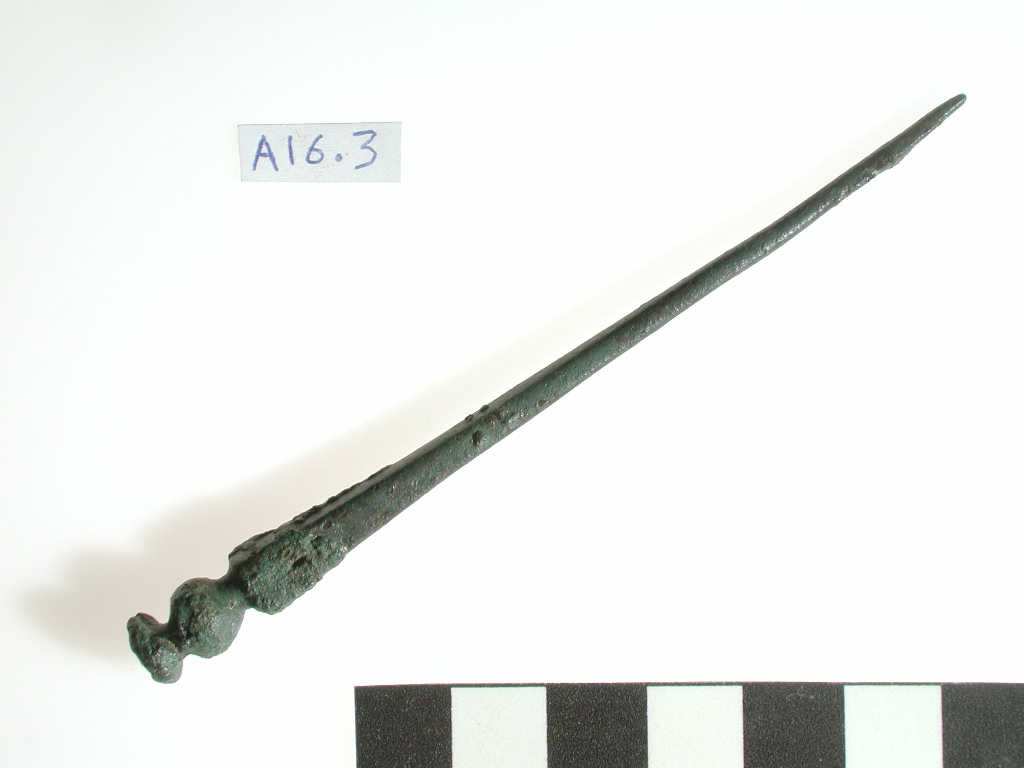 i3 |
Other objects made of precious metals were found, a silver ring with unusual shape (q4.2), a silver fragment (i160) and a silver wire (q423.1). Another important object is a gold item, probably head or seal holder (i104).
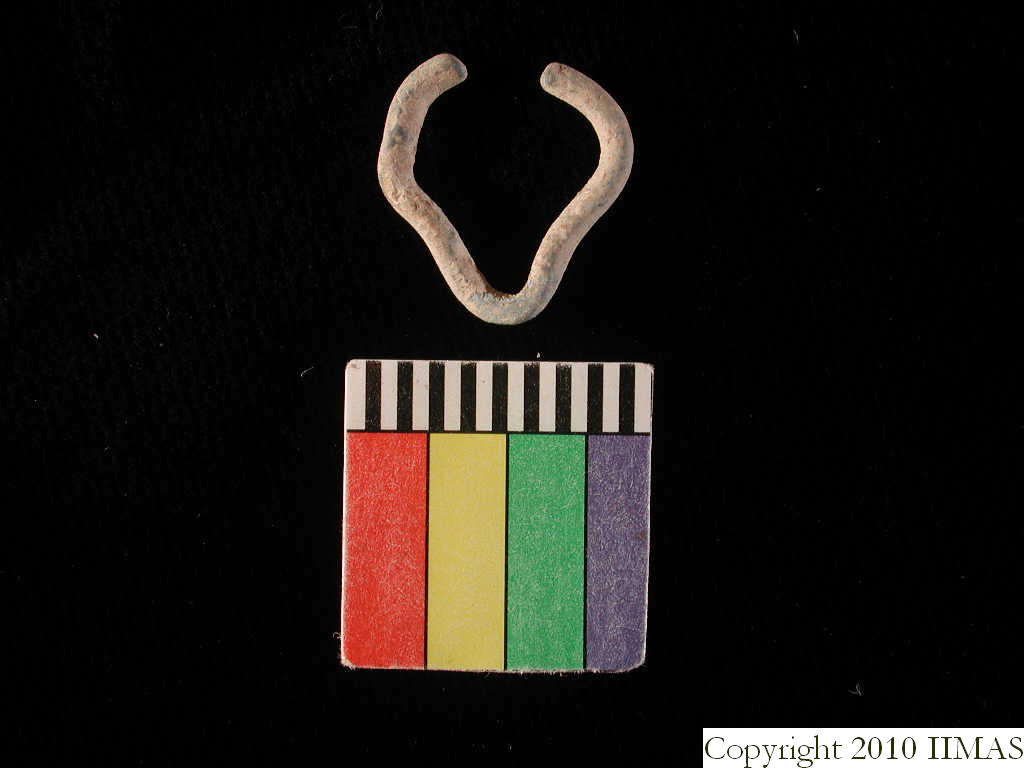 q4.2 |
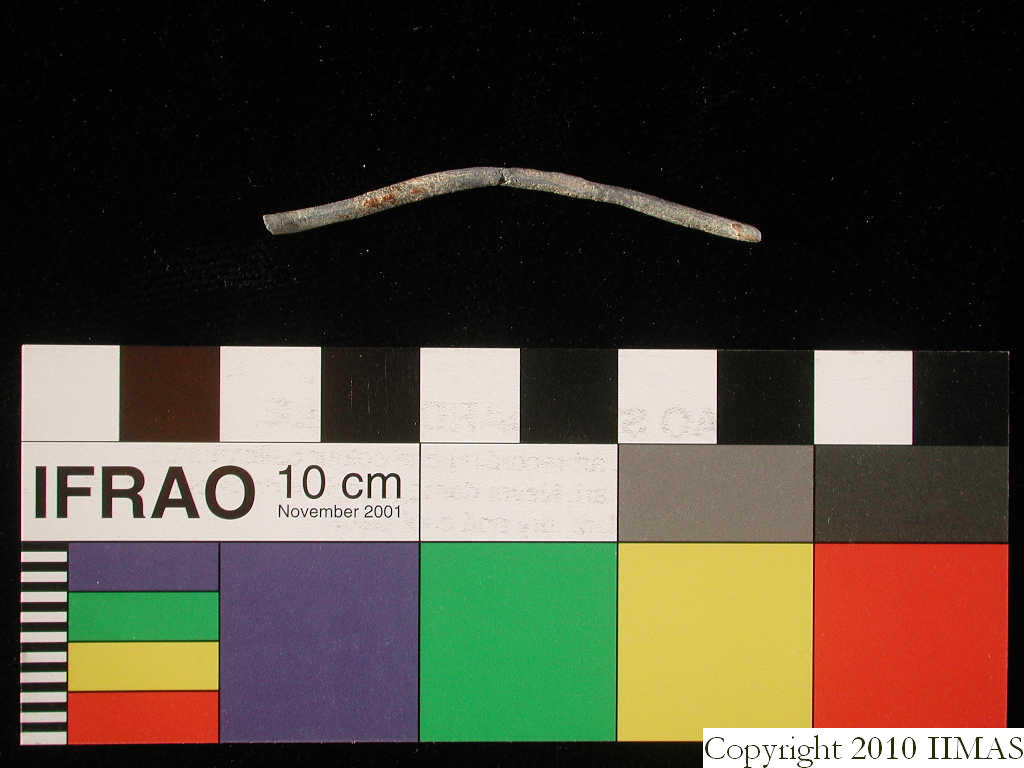 q423.1 |
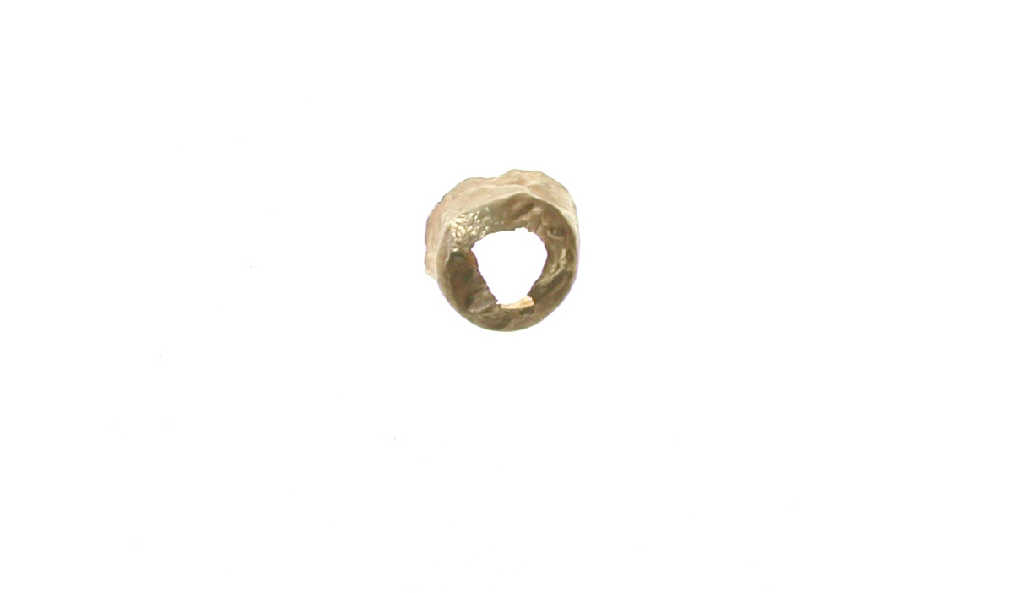 i104 |
Very beautiful is a small (about 2 cms) bovis head (i137), possibly the head of a pin, a bronze blade (i94), a very beautiful beer strainer (i10).
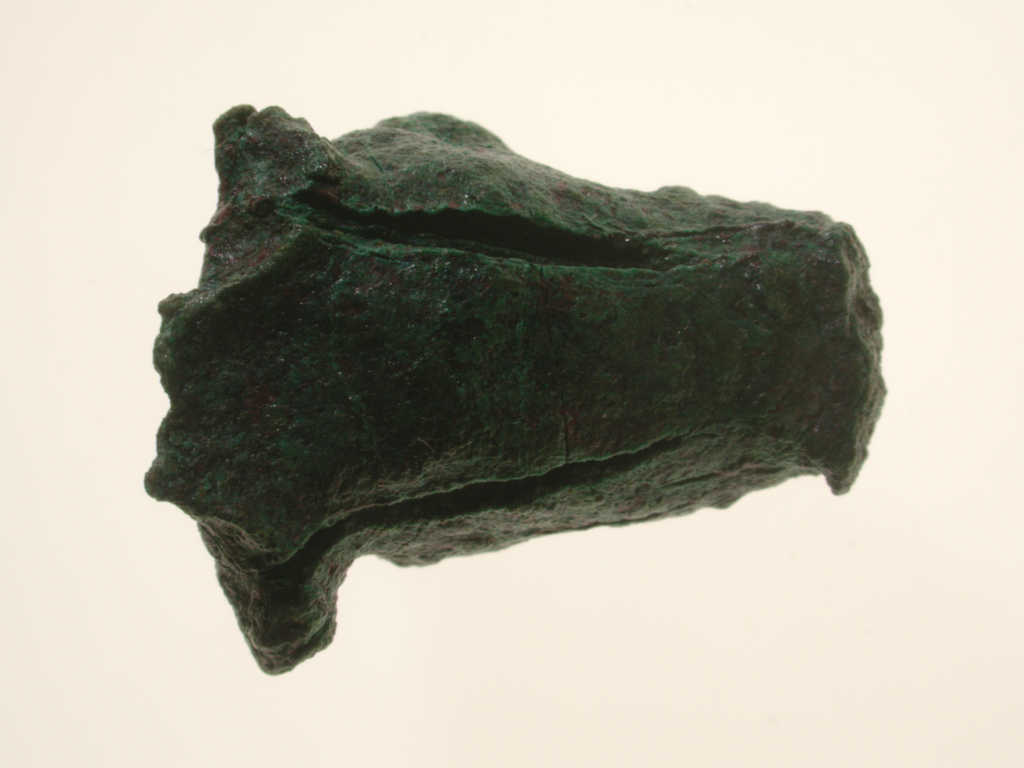 i137 |
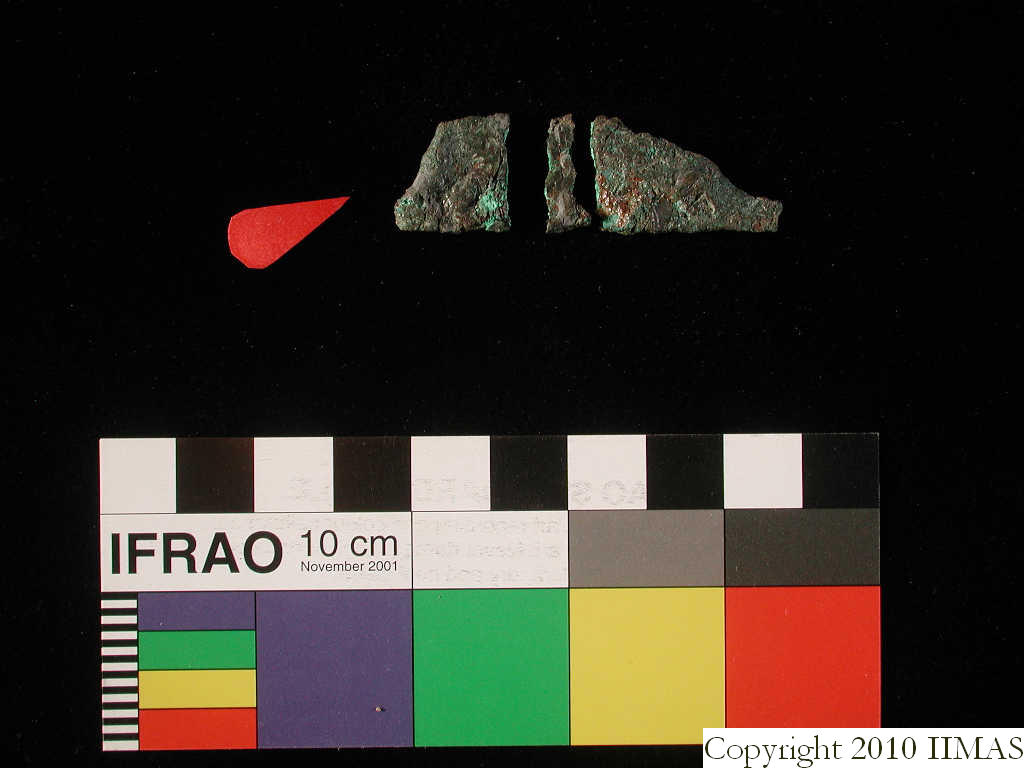 i94 |
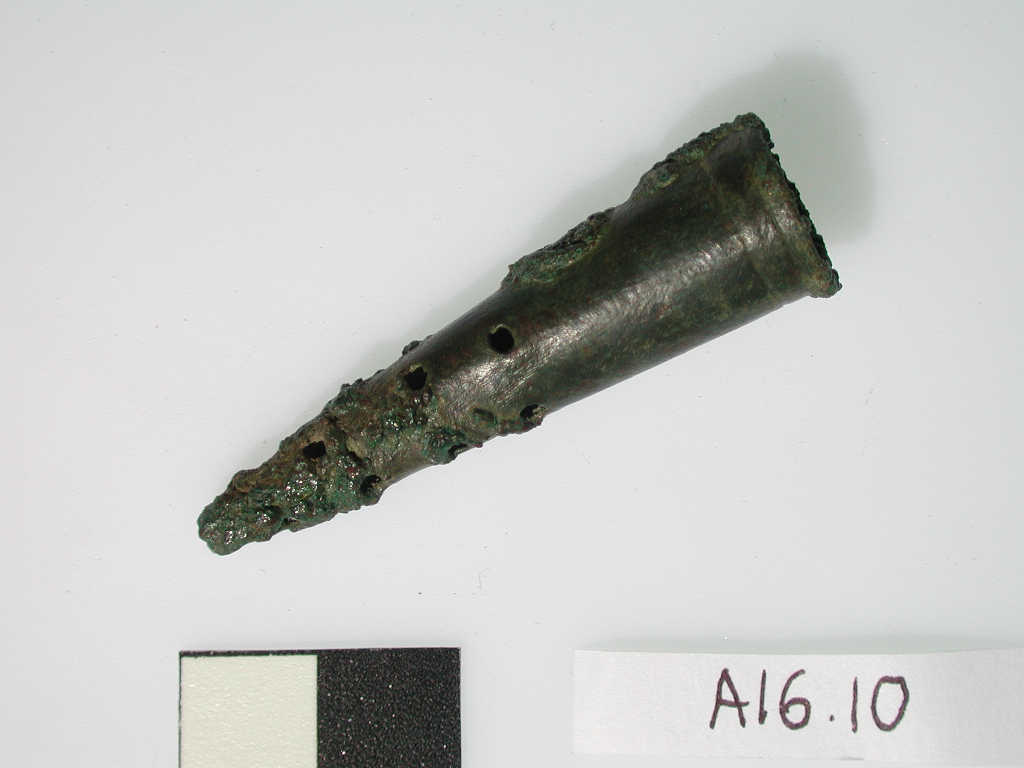 i10 |
Numerous the metal slags were found (q711.2, q711.3, q841.2, q864.1), showing metallurgy activities carried out somewhere nearby.
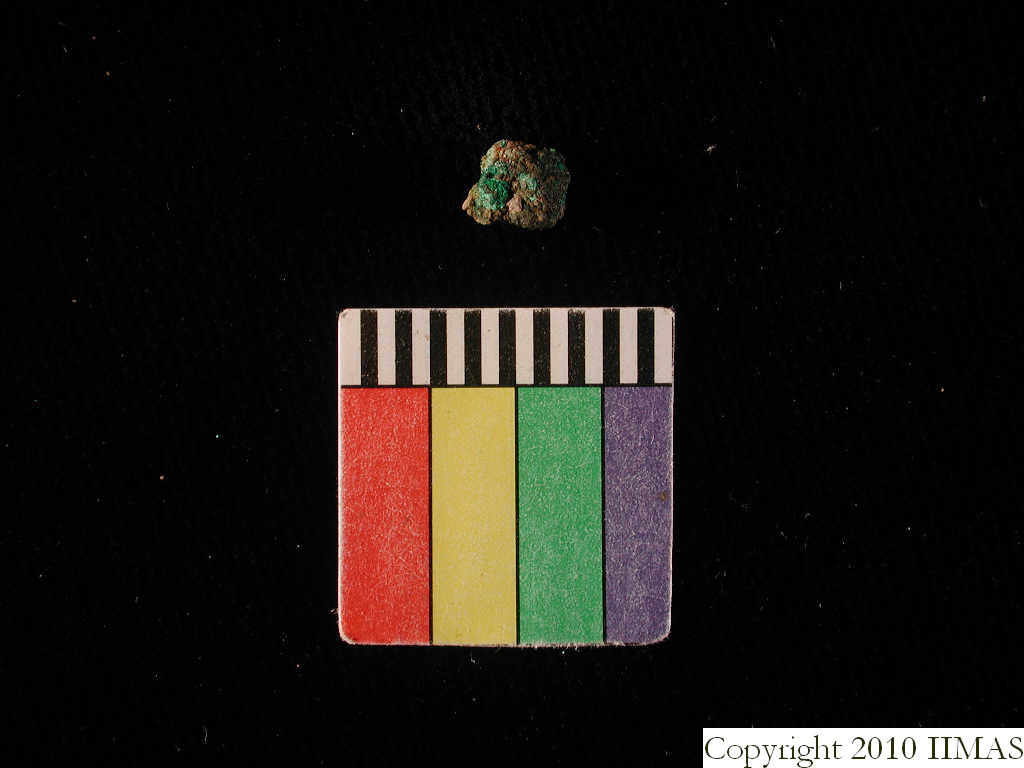 q711.2 |
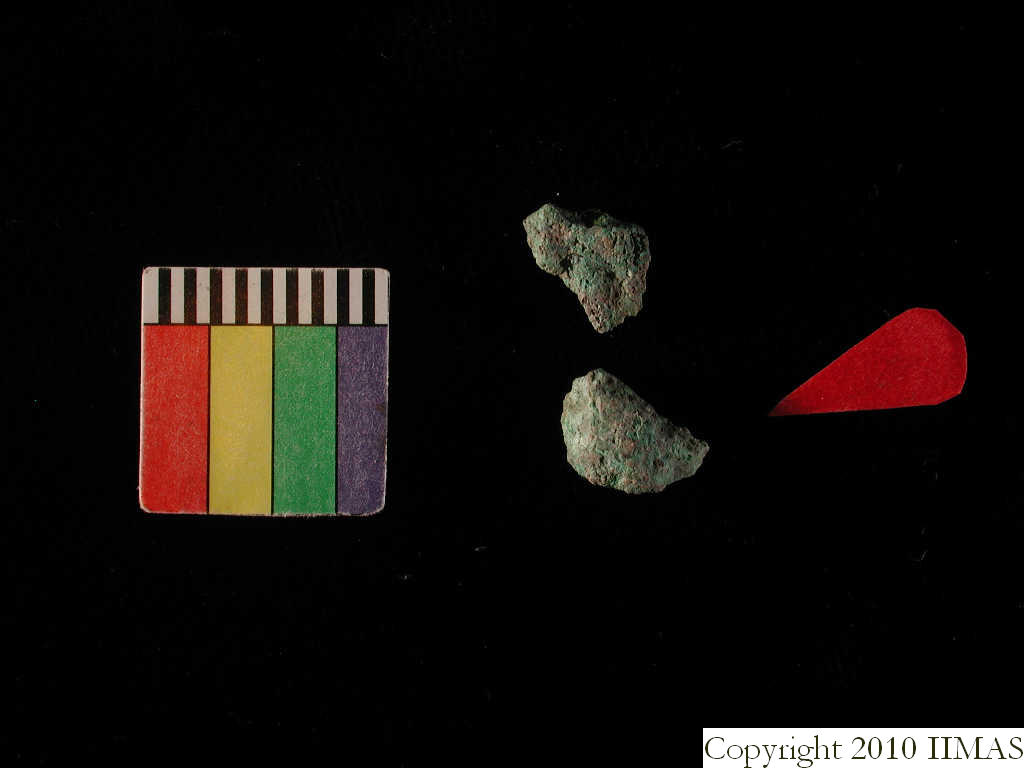 q711.3 |
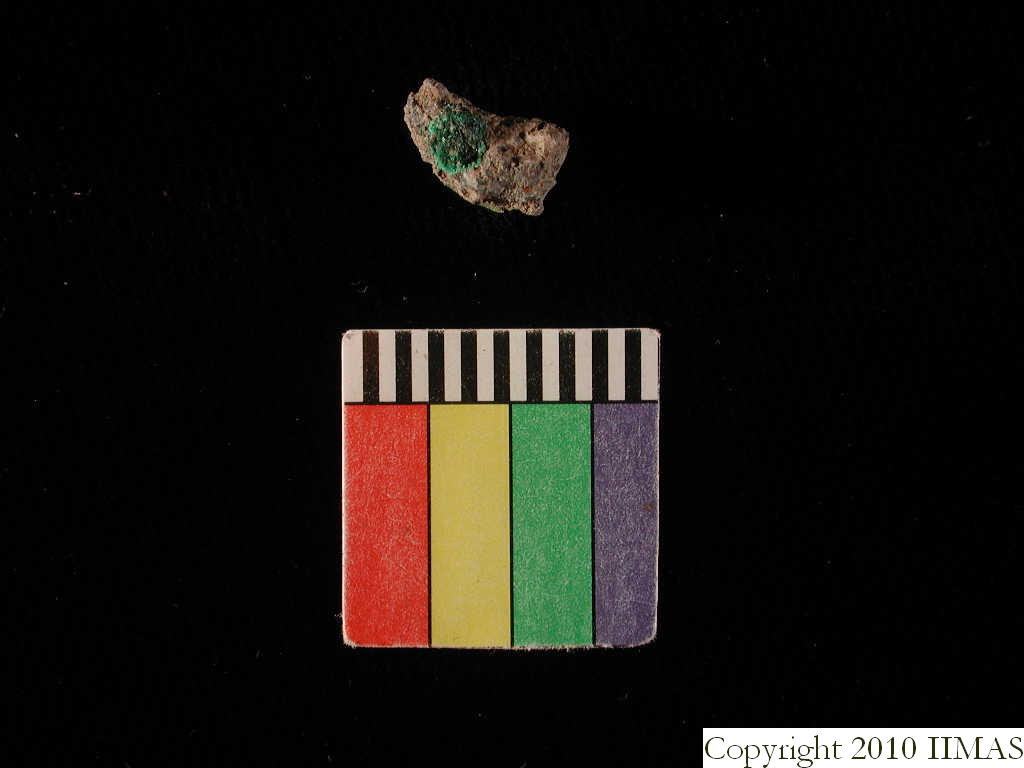 q864.1 |
Back to top: Metals from Unit A16